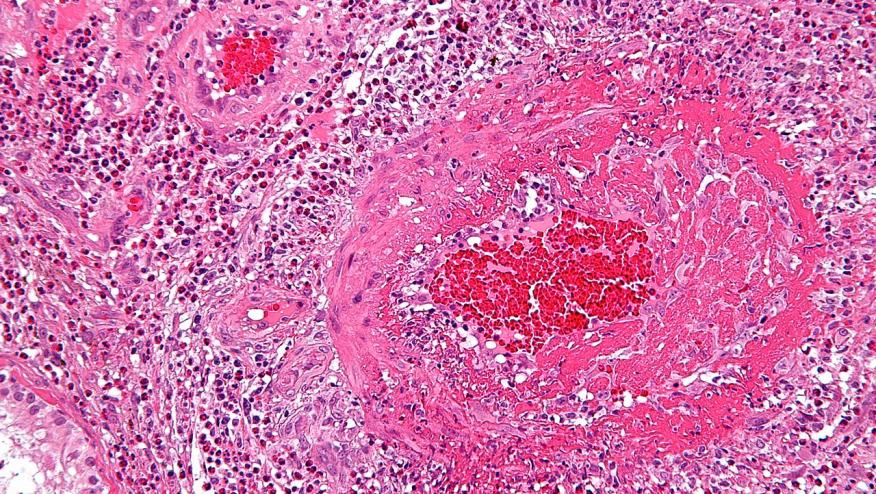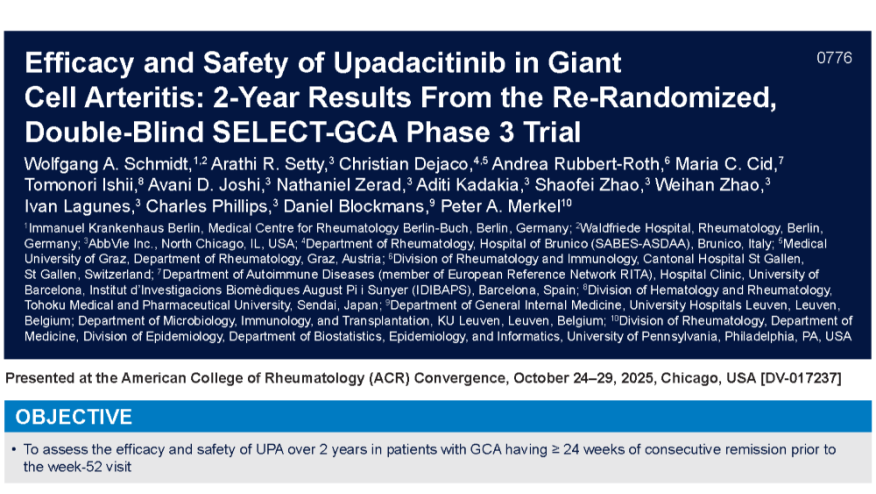Serious Infections Still Common in Vasculitis Save

Serious infections occurred more frequently among patients with anti-neutrophil cytoplasmic antibody (ANCA)-associated vasculitis who were given induction therapy with cyclophosphamide compared with rituximab (Rituxan), Greek researchers found.
The incidence of serious infections among patients undergoing induction treatment with cyclophosphamide was 19.34 per 100 patient-years compared with 11.34 per 100 for those whose induction regimen was with rituximab, for an incidence rate ratio for cyclophosphamide of 4.24 (95% CI 2.35-7.61), reported Dimitrios Vassilopoulos, MD, of the National and Kapodistrian University of Athens School of Medicine, and colleagues.
However, there was no difference in rate of serious infections during maintenance therapy when rituximab was compared with other agents such as azathioprine or mycophenolate mofetil (Cellcept), with an incidence rate ratio of 1.22 (95% CI 0.54-2.55), they wrote online in Arthritis Research & Therapy.
Patients with ANCA-associated vasculitides granulomatosis with polyangiitis and microscopic polyangiitis continue to have significant morbidity and mortality despite improvements in treatment, such as the wider use of rituximab, and the incidence of serious infections remains high.
While extension studies of clinical trials have provided some data on serious infections in these patients, real-world data have been sparse.
Therefore, to address this question, Vassilopoulos and colleagues conducted a retrospective study of 162 patients with ANCA-associated vasculitis treated at three referral centers in Greece from 1990 to 2020.
Serious infections were defined as those necessitating hospitalization or intravenous antibiotics, all cases of herpes zoster, and any opportunistic infections.
Slightly more than half of patients were men, mean age was 61, and two-thirds had granulomatosis with polyangiitis. Mean Birmingham Vasculitis Activity Score (BVAS) at baseline was 12.75.
Mean baseline estimated glomerular filtration rate (GFR) was 59.1 mL/min, and in almost a quarter of patients, the baseline GFR was below 30 mL/min. Renal replacement therapy and/or plasma exchange was needed at baseline for 6.2%.
Of the patients, 61% received induction therapy with cyclophosphamide alone, 18% with rituximab alone, and 9% with both, while the remainder received other agents such as methotrexate, mycophenolate mofetil, or glucocorticoids. Mean daily prednisolone dose was 44 mg.
For maintenance therapy, 38.1% were given azathioprine and 37.5% received rituximab, while the remainder were treated with mycophenolate, methotrexate, or other agents.
During a mean follow-up of 5.4 years, 50 patients developed 67 serious infections, for an incidence rate of 7.5 per 100 patient-years. Median time to the first serious infection was 1.1 year, and the mortality rate during that time was 9.2%.
Site of infection was the respiratory tract in 45% of patients, and the gastrointestinal tract and urinary tract in 9% each. The infection was herpes zoster in 24% and bacteremia in 9%. Median glucocorticoid dosage at the time of infection was 19 mg per day.
Risk factors for serious infections during the entire follow-up period included having had plasma exchange and/or dialysis (29% vs 8.9%, P=0.002), having higher baseline prednisolone dosage (48.4 vs 42.2 mg per day, P=0.01), having lower estimated GFR (50.9 vs 62.9 mL/min, P=0.048), having higher baseline BVAS (14.6 vs 11.9, P=0.01), and having more comorbidities.
On a multivariate analysis, there was a fivefold greater risk for serious infection among patients requiring plasma exchange and/or dialysis throughout the study period (OR 5.21, 95% CI 1.93-14.07).
The majority of infections (42%) occurred during the first year following diagnosis, with an incidence rate of 18.6 per 100 patient-years, declining thereafter to 6.2, 5.7, and 4.7 per 100 in the second, third, and fourth year after diagnosis.
During the first year after diagnosis, 14% of patients developed a serious infection. Several factors were associated with the occurrence of a serious infection during the first year:
- Older age (68.2 vs 59.7 years, P=0.016)
- Early plasma exchange and/or dialysis (39% vs 11%, P<0.001)
- Cyclophosphamide-rituximab combination therapy (19% vs 3.7%, P=0.008)
- Diabetes (43.5% vs 14.5%, P=0.001)
- Higher BVAS (16.7 vs 12.1, P=0.01)
- Lower estimated GFR (40.6 vs 62.5 mL/min, P=0.006)
- Higher baseline prednisolone dosage (51.8 vs 42.5 mg per day, P=0.007)
On a multivariate analysis, independent predictors of serious infection during the first year were the requirement for plasma exchange and/or dialysis (OR 3.16, 95% CI 1.001-9.96) and higher baseline BVAS (OR 1.11, 95% CI 1.01-1.21).
The overall incidence of serious infections throughout the 5 years of follow-up was considerably lower than what was reported in earlier studies. In one report from 10 years ago, infection was the cause of death during the first year after diagnosis in almost half of patients. "This decreasing incidence could be attributed to the better overall care of these patients and the limited use of cyclophosphamide and glucocorticoids given for extended periods of time," the researchers observed.
"Altogether, our results emphasize the challenges that caring physicians are facing for the treatment of ANCA-associated vasculitis and highlight the unmet needs for safer treatment regimens, especially during the early phases of the disease," they concluded.
A limitation of the study was its retrospective design, they noted.
The study was funded by the Greek Rheumatology Society and Professional Association of Rheumatologists and by the Special Account for Research Grants, National and Kapodistrian University of Athens.










If you are a health practitioner, you may Login/Register to comment.
Due to the nature of these comment forums, only health practitioners are allowed to comment at this time.